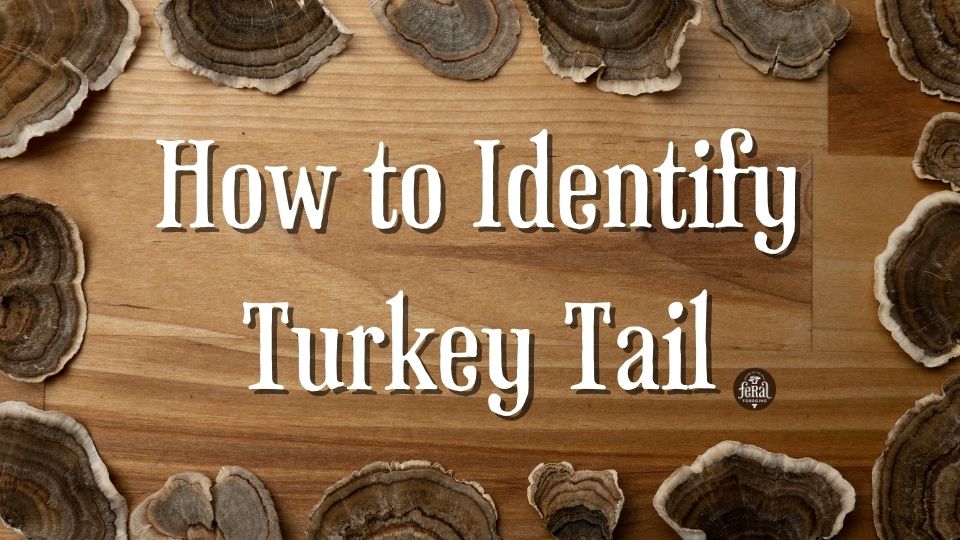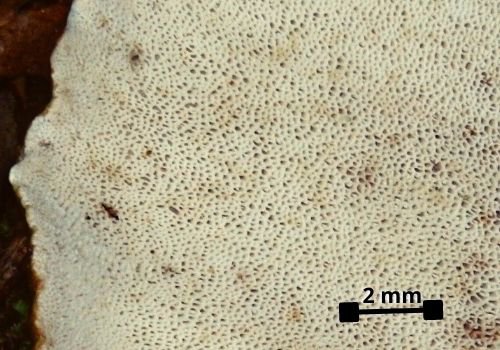Turkey tail mushrooms are one of the most common and easily identifiable mushrooms found in forests around the world With their colorful, banded caps that resemble the tail feathers of a turkey, it’s easy to see where they get their common name But before collecting and eating any mushroom, it’s essential to accurately identify it. Here is a complete guide on how to identify true turkey tail mushrooms and distinguish them from lookalikes.
What Are Turkey Tail Mushrooms?
Turkey tail mushrooms, whose scientific name is Trametes versicolor, are a polypore type of fungi that grow predominantly on dead deciduous trees and logs. Polypores are a group of mushrooms that have pores or tubes on the underside of their caps rather than gills.
Turkey tails are among the most widespread mushrooms in the world and can be found on every continent except Antarctica They grow throughout North America, Europe, Asia, and beyond Turkey tail earned its common name from its striking coloration, with bands of varying shades of brown, black, gray, blue, orange, and white resembling the tail of a turkey.
Why Identify Turkey Tail Mushrooms?
There are a few key reasons why foragers want to confidently identify turkey tail mushrooms:
-
Edibility – Although too tough to eat, turkey tail can be used to make medicinal teas and extracts. Proper ID is crucial for safe consumption.
-
Medicinal value – Compounds in turkey tail mushrooms have potential health benefits and immune-boosting properties. But these benefits only come from true turkey tails.
-
Ecology – Turkey tails are important decomposers in forest ecosystems. Identifying them helps map and monitor their habitats.
-
Lookalikes – There are some mushrooms that resemble turkey tails but lack their beneficial compounds. Distinguishing lookalikes prevents foragers from accidentally harvesting the wrong mushrooms.
Key Identification Features of Turkey Tails
When foraging, look for these key features to be sure you have found true turkey tail mushrooms:
-
Colorful, banded caps – Caps have concentric rings of varying shades of brown, black, gray, blue, orange, and white. The margin is the lightest color.
-
Pores on the underside – The underside has very fine pores rather than gills. Pores should be small and white or pale in color.
-
Velvety cap texture – The cap has a velvety feel due to fine hairs covering the surface. It should not feel smooth or slippery.
-
Flat, flexible caps – Caps are generally flat and slightly flexible but feel tough or leathery. They are often fan-shaped.
-
Growing on wood – Look for turkey tails growing in overlapping clusters on dead logs, stumps, and branches.
Lookalikes to Avoid
When identifying turkey tails, watch out for these common imposters:
-
False turkey tail – Has a smooth underside with no pores. Colors are subdued with less distinct bands.
-
Violet toothed polypore – Underside has teeth rather than pores. Cap margin is purple-tinged.
-
Artist’s conk – Smooth underside. Cap has a whitish, mottled appearance with tan edges.
-
Gilled polypore – As the name suggests, the underside has gills rather than pores. Resembles turkey tail in appearance.
Confirming Your Identification
When in doubt about an identification, use these tips to be 100% sure you have found true turkey tail mushrooms:
-
Take clear, close-up photos of the mushroom from multiple angles.
-
Note key characteristics like color, texture, and underside features.
-
Compare against photos and descriptions in reputable field guides or identification resources.
-
Post photos online to get confirmation from experts on mushroom ID forums.
-
If edibility is in question, consult a professional mycologist for identification. Exercise caution!
Properly identifying turkey tail mushrooms is an important skill for mushroom hunters. With patience and practice, you’ll soon be able to recognize turkey tails with confidence anytime you encounter them on your forays into the forest. Happy hunting!
Resources for Turkey Tail Identification
Here are some reliable resources to assist with turkey tail identification and improving your mushroom ID skills:
-
MushroomExpert.com – Detailed turkey tail profile with photos and lookalikes
-
Audubon Field Guide – Pictures and description of key turkey tail identification markers
-
Forest Mushrooms – High quality photos comparing true turkey tail and false turkey tail side by side
-
Wikipedia – Overview of turkey tail’s taxonomy, habitat, ecology and more
-
YouTube – Useful turkey tail ID video tutorials
-
Facebook Groups – Mushroom identification and foraging online communities
-
Field guides like National Audubon Society Field Guide to North American Mushrooms

Turkey Tail Mushroom Identification
Luckily, when it comes to turkey tail mushroom (fruiting body) identification there are no toxic lookalikes. So, it is a safe mushroom to forage for, even if you don’t end up finding “the real thing.” Because, yes, there are common mushrooms that look similar but will not contain the health-supporting compounds that turkey tail (scientific name Trametes versicolor) is known and valued for.
So, use our 4-point checklist below to help you find the true turkey tail mushroom. You can then put your newfound powers of mushroom deduction skills to good use on your next forest walk. If you decide to forage what you find, you can take some fresh turkey tail home to make a healthy tea.
Turkey Tail Mushroom Identification Checklist
If you can answer “YES” to all the following questions about the mushroom you’re observing, then you’ve found the true turkey tail!
- Are there pores on the underside of your mushroom? See the below for what these should look like.
- Does the top side of the mushroom have very fine hairs, making it velvety to the touch?
- Are there concentric bands of different shades on the top side of the mushroom?
- Is the fresh mushroom thin and flexible? (see the video in the next section)

How to Identify Turkey Tail Mushrooms ( and distinguish from false lookalikes )
FAQ
Are there any poisonous turkey tail look alikes?
What are the characteristics of a turkey tail?
Are false turkey tails edible?
What looks like a turkey tail but has teeth?
How do you know if a turkey tail is real?
Real turkey tail has a flexible and thin body. Unlike many other crust or bracket fungi, you can bend it easily. It usually has subtle ridges along its body and edges where it fans out, so the surface can feel bumpy. However, it will also feel soft to the touch. The cap is covered with fine hairs that give it a nice, velvety finish.
Is it safe to eat the tail of a fish?
Is it safe to eat the tail of a fish. The tails and fins from large fish can be smoked and boiled to help draw out meat and juices, but small fins can be fried or baked as a crispy snack, much the same way as skins.
What does a false turkey tail look like?
The False Turkey tail is not a polypore like the True Turkey tail so it does not have pores on the underside. It is a shelf like bracket looking mushroom similar to the True Turkey tail. This one is a crust fungus. When you fist see this mushroom you may think it looks like a paint stain on the mood when it is actually a mushroom.
Does turkey tail have a positive ID?
There are many lookalikes to Turkey Tail and before using it (or any foraged good), it is imperative that you understand Turkey Tail identification to confidently get a 100% positive ID! Luckily for us Turkey Tail identification is not a difficult task if you know what to look for.
